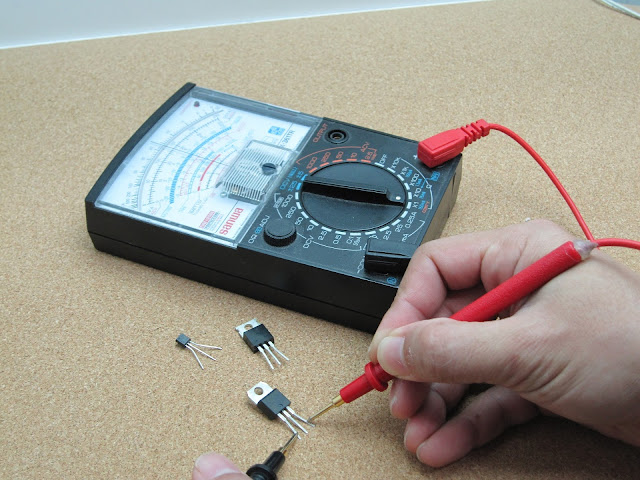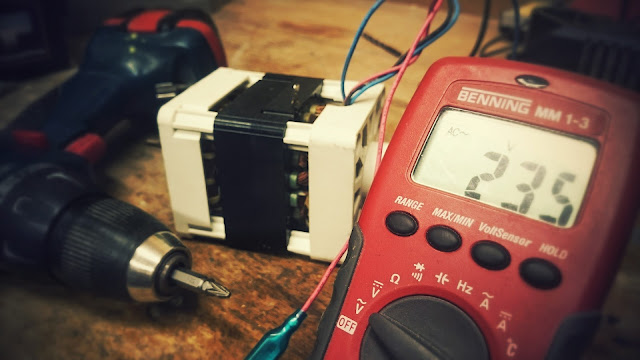When it comes to measuring electrical parameters, a multimeter is an indispensable tool for technicians and DIY enthusiasts alike. A multimeter can measure voltage, current, resistance, capacitance, and many other parameters of electrical circuits. There are two main types of multimeters: analog and digital. Here at Shoppiverse PH, we will explore the differences between the two types of multimeters and their functions.
Table of Contents:
I. Analog Multimeters
- What is an analog multimeter?
- The components of an analog multimeter
- The working principle of an analog multimeter
- Advantages of analog multimeters
- Disadvantages of analog multimeters
II. Digital Multimeters
- What is a digital multimeter?
- The components of a digital multimeter
- The working principle of a digital multimeter
- Advantages of digital multimeters
- Disadvantages of digital multimeters
III. Comparing Analog and Digital Multimeters
- Accuracy
- Resolution
- Range
- Sensitivity
- Durability
- Cost
IV. Choosing the Right Multimeter
- Application
- Budget
- Personal Preference
- User Skill Level
I. Analog Multimeters
What is an Analog Multimeter?
Analog multimeters are one of the earliest types of multimeters, also known as VOMs (volt-ohm-meters). Analog multimeters consist of a moving needle that indicates the value of the measured parameter on a scale.
The Components of an Analog Multimeter
Analog multimeters have four main components: a measuring mechanism, a scale, a selector switch, and test leads. The measuring mechanism consists of a coil and a magnet, which is responsible for moving the needle. The scale indicates the measured value. The selector switch is used to choose the parameter to be measured. The test leads to connect the multimeter to the circuit being measured.
The Working Principle of an Analog Multimeter
Analog multimeters work on the principle of a moving-coil meter. The coil in the measuring mechanism is wound around a soft iron core, and a magnet is placed near the coil. When current flows through the coil, it creates a magnetic field that interacts with the magnetic field of the magnet, causing the coil to rotate. The scale is calibrated to indicate the value of the measured parameter.
Advantages of Analog Multimeters
Analog multimeters have a few advantages over digital multimeters. They are simple to use and can be read easily even in low-light conditions. They are also less expensive compared to digital multimeters.
Disadvantages of Analog Multimeters
Analog multimeters have a few disadvantages as well. They are less accurate and less precise than digital multimeters. They can also be affected by external magnetic fields, which can cause errors in the measurement.
II. Digital Multimeters
What is a Digital Multimeter?
Digital multimeters are the modern version of multimeters. Digital multimeters use digital displays to indicate the measured values. They are more accurate and precise than analog multimeters.
The Components of a Digital Multimeter
Digital multimeters have four main components: a measuring circuit, a display, a selector switch, and test leads. The measuring circuit converts the analog signal from the circuit being measured into a digital signal that can be displayed on the digital display. The selector switch is used to choose the parameter to be measured. The test leads to connect the multimeter to the circuit being measured.
The Working Principle of a Digital Multimeter
Digital multimeters work on the principle of analog-to-digital conversion. The analog signal from the circuit being measured is first converted to a digital signal using an analog-to-digital converter (ADC). The digital signal is then processed and displayed on the digital display in the appropriate units.
Advantages of Digital Multimeters
Digital multimeters have several advantages over analog multimeters. They are more accurate and precise. They can also measure a wider range of parameters and have additional features like data logging, auto-ranging, and auto-shutoff. Digital multimeters are not affected by external magnetic fields, and they can be used in noisy environments.
Disadvantages of Digital Multimeters
Digital multimeters also have a few disadvantages. They can be more expensive than analog multimeters. They require batteries to operate, which can be a problem if the batteries run out during a measurement. Digital displays can be difficult to read in low light conditions, and they can be affected by electromagnetic interference.
III. Comparing Analog and Digital Multimeters
Accuracy
Digital multimeters are more accurate than analog multimeters. Digital multimeters have a resolution of up to four decimal places, whereas analog multimeters only have a resolution of up to two decimal places.
Resolution
Digital multimeters have a higher resolution than analog multimeters. Digital multimeters can measure very small changes in the value of the measured parameter, whereas analog multimeters cannot.
Range
Digital multimeters have a wider range than analog multimeters. Digital multimeters can measure parameters that are outside the range of analog multimeters.
Sensitivity
Analog multimeters are more sensitive than digital multimeters. Analog multimeters can detect very small changes in the value of the measured parameter, whereas digital multimeters have a limited sensitivity.
Durability
Analog multimeters are more durable than digital multimeters. Analog multimeters do not require batteries, and they can withstand rough handling and extreme temperatures better than digital multimeters.
Cost
Analog multimeters are less expensive than digital multimeters. Analog multimeters are a good option for those on a tight budget, whereas digital multimeters are more suitable for professionals who require high accuracy and precision.
IV. Choosing the Right Multimeter
Application
The choice of a multimeter depends on the application. If high accuracy and precision are required, a digital multimeter is the best choice. If the measurement does not require high accuracy, an analog multimeter may be sufficient.
Budget
The budget also plays a role in choosing the right multimeter. If the budget is tight, an analog multimeter is a good option. If cost is not an issue, a digital multimeter is the best choice.
Personal Preference
Personal preference also plays a role in choosing the right multimeter. Some people prefer the simplicity and ease of use of analog multimeters, while others prefer the accuracy and precision of digital multimeters.
User Skill Level
The user's skill level is also an important factor. If the user is not familiar with electronics, an analog multimeter may be easier to use. If the user is experienced and requires high accuracy and precision, a digital multimeter is the best choice.
Conclusion
In summary, there are two main types of multimeters: analog and digital. Analog multimeters use a moving needle to indicate the measured values, while digital multimeters use a digital display. Digital multimeters are more accurate, precise, and versatile than analog multimeters. However, analog multimeters are more durable and less expensive than digital multimeters. The choice of multimeter depends on the application, budget, personal preference, and user skill level.





